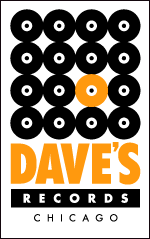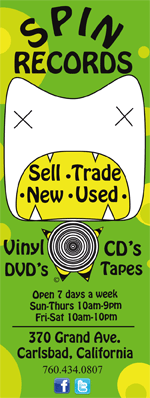
VIA PRESS RELEASE | “I love it that phonograph records are popular again,” enthuses Marshall Crenshaw. “They were consigned to oblivion by the music business back when I was recording for Razor & Tie, but now they’re back!”
 The artist recently regained ownership of the five acclaimed albums he released on the Razor & Tie label between 1994 and 2003, and plans to issue revised editions of those efforts, on vinyl and on all digital platforms, beginning with his 1996 release Miracle of Science, due on January 17, 2020 on Crenshaw’s own Shiny-Tone label (distributed through Megaforce). Ultimately, the new reissue series will encompass three much-loved studio albums—Miracle of Science, 1999’s #447 and 2003’s What’s in the Bag?—plus 1994’s live My Truck Is My Home and 1998’s early demos collection The 9 Volt Years. Each album will include two newly recorded, previously unreleased tracks, which will appear on a bonus 7″ single on the vinyl editions and as bonus tracks on the CD and digital versions.
The artist recently regained ownership of the five acclaimed albums he released on the Razor & Tie label between 1994 and 2003, and plans to issue revised editions of those efforts, on vinyl and on all digital platforms, beginning with his 1996 release Miracle of Science, due on January 17, 2020 on Crenshaw’s own Shiny-Tone label (distributed through Megaforce). Ultimately, the new reissue series will encompass three much-loved studio albums—Miracle of Science, 1999’s #447 and 2003’s What’s in the Bag?—plus 1994’s live My Truck Is My Home and 1998’s early demos collection The 9 Volt Years. Each album will include two newly recorded, previously unreleased tracks, which will appear on a bonus 7″ single on the vinyl editions and as bonus tracks on the CD and digital versions.
“Miracle of Science was a turning point for me,” Crenshaw recalls. “I had voluntarily taken myself out of the major-label world. ADAT machines had just come out, so I bought a couple of those and a few other pieces of gear, and now suddenly I could make records at home if I felt like it. That took me back to my roots, you might say; I did about half the album at home by myself. And the other people that played on the record, I still get such a huge kick out of hearing what they did, particularly on the tracks that I recorded at Alex the Great studios in Nashville. There’s a lot of spirit in the music, a lot of fire. The playing is loose and wild—a much different approach from what you hear on my major-label records, and a real breakthrough, for my money.
“Overall, I’d say that there’s a lot of great music on this album, a lot of great noise too, and some cool sounds,” he continues. “I’ve seen the songs on the album described as ‘cinematic’ and ‘atmospheric’; that works for me. One of my favorites is ‘What Do You Dream Of.’ I was trying to write a rockabilly song when I started it—you might not guess that. It’s most definitely a love song, but it’s also about how no matter how close you think you are to a loved one, they’ve still got their own personal internal life.”
The new edition of Miracle of Science includes a pair of bonus tracks, “Misty Dreamer” by Scottish indie-pop artist Daniel Wylie, and “What the Hell I Got,” a 1974 number by Canadian artist Michel Pagliaro, which was a monster smash in Pagliaro’s native country, and a regional hit on Crenshaw’s hometown radio station CKLW-FM.
“Of all the Razor & Tie albums,” Crenshaw explains, “Miracle of Science was the only one that never had an analog master tape, and I knew that I wanted to create one for this vinyl release. All audio formats have their quirks and idiosyncrasies, and with analog you can pick and choose with tape speed, tape width, tape saturation etc. These are artistic choices because they affect the sound and feel of the thing. Once I knew that I was going down that road, I decided to go further and re-address a couple of the songs on the album. If Francis Coppola can fool around with Apocalypse Now, I can fool around with Miracle of Science, right?
“I got pretty aggressive with ‘Only an Hour Ago.’ Listening in 2019, it seemed that the original production and arrangement were burying the song. So I changed it, mostly using the original elements. And I did a similar thing on ‘There and Back Again.’ There’s a track called ‘Rouh Na Selim Neves,’ which is ‘Seven Miles an Hour’ backwards. As I was reviewing this album a few months ago, I heard ‘Seven Miles an Hour,’ and thought, ‘Hmmm, I bet this track would sound a lot better backwards.’ So I did it and nobody tried to stop me. The original not-backwards version is still on the album too.”
And there’s more.
Crenshaw notes, “As much as I love the artwork on the original CD—which was Grammy-nominated—we couldn’t use it for an LP. There was no way. So art director Paul Grosso came to the rescue and did a beautiful job. And I couldn’t resist paying tribute to the circa-1958 Roulette Records label design. I hope nobody comes after me about that, but we checked and there’s no copyright. It’s a bit of an inside joke for fans of a certain ilk of record-business folklore. Roulette was a great label.
“The result of all this tinkering,” Crenshaw assesses, “is that Miracle of Science is all shiny and new to me now, and I love it even more now than before.”












































